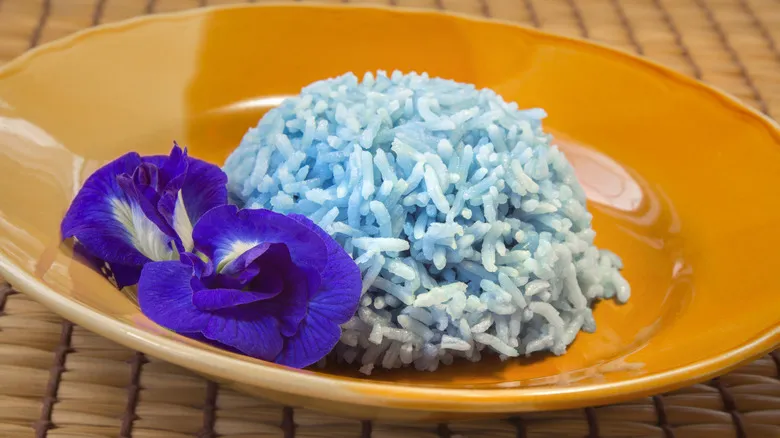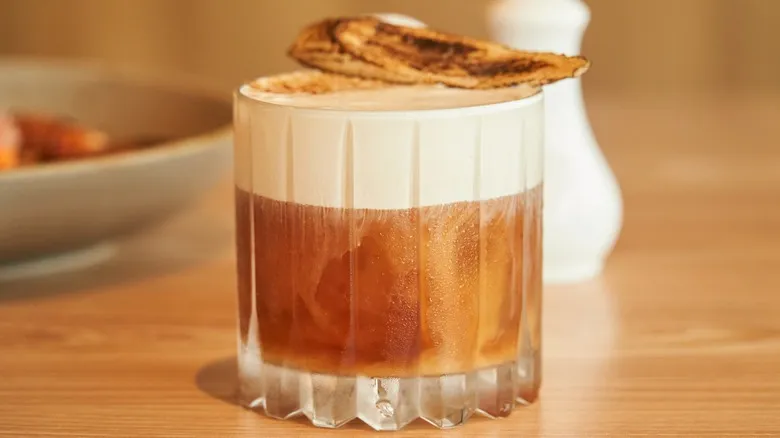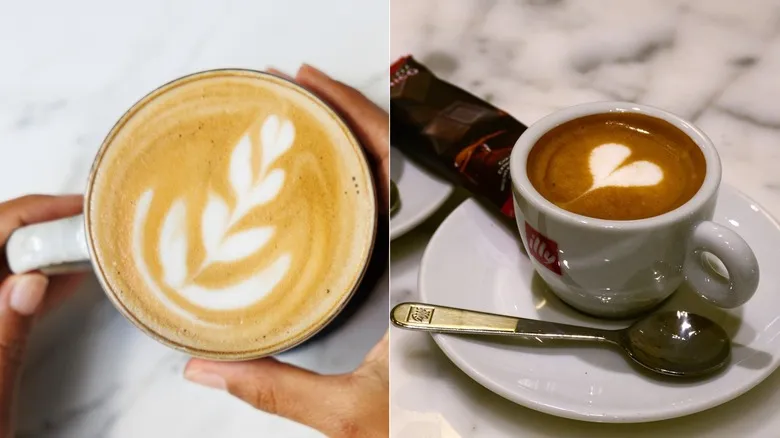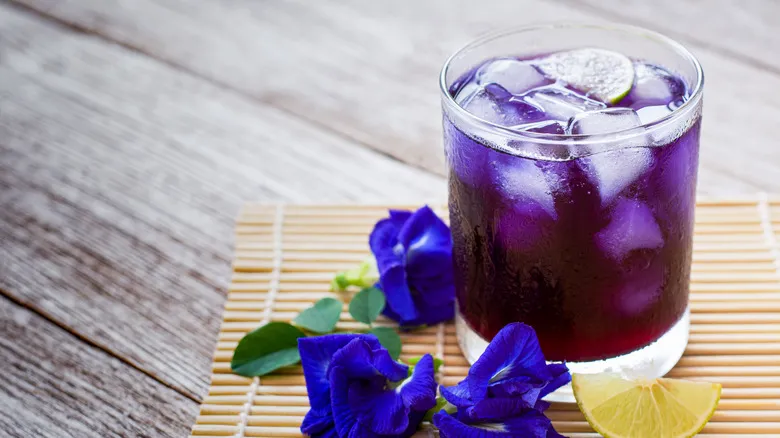How is butterfly pea flower tea used?

The vibrant hue of butterfly pea flower tea is undoubtedly its standout feature, but the flavor deserves attention as well. While the eye-catching blue shade may evoke thoughts of blue raspberry candy and the sweet notes of Blue Curaçao, the tea itself offers a much different experience. Its taste is quite mild, with earthy and grassy undertones, and a hint of green tea flavor, all without any caffeine.
Before butterfly pea flower tea gained popularity as a trendy drink in the West, it was already a staple in Southeast Asian cuisine. In Thailand, it is commonly enjoyed as a sweetened tea with a splash of citrus, often enhanced with lemongrass. Additionally, it is frequently used to impart a blue tint to light-colored dishes such as cakes, dumplings, and rice, particularly in countries like Malaysia and Singapore.
The rise of butterfly pea flower tea was so significant that even Starbucks took notice, introducing a butterfly pea lemonade cold brew in Southeast Asia in 2018. Today, this flower has become a global sensation, embraced by bartenders, chefs, and baristas around the world. Mixologists utilize the flower to create visually stunning cocktails that change color, typically combining it with fresh ingredients like lemon, tonic, lime, mint, and gin. Coffee shops serve the tea on its own or incorporate it to add a vibrant purple hue to lattes and lemonades.
Recommended

The 4-Ingredient Cold Foam That Makes Bananas The Star

What's The Difference Between Macchiato And A Latte?

Does Coffee Actually Dehydrate You? An Expert Explains

Kopi Luwak Proves Even A 'Crappy' Cup Of Coffee Can Taste Good
Next up

